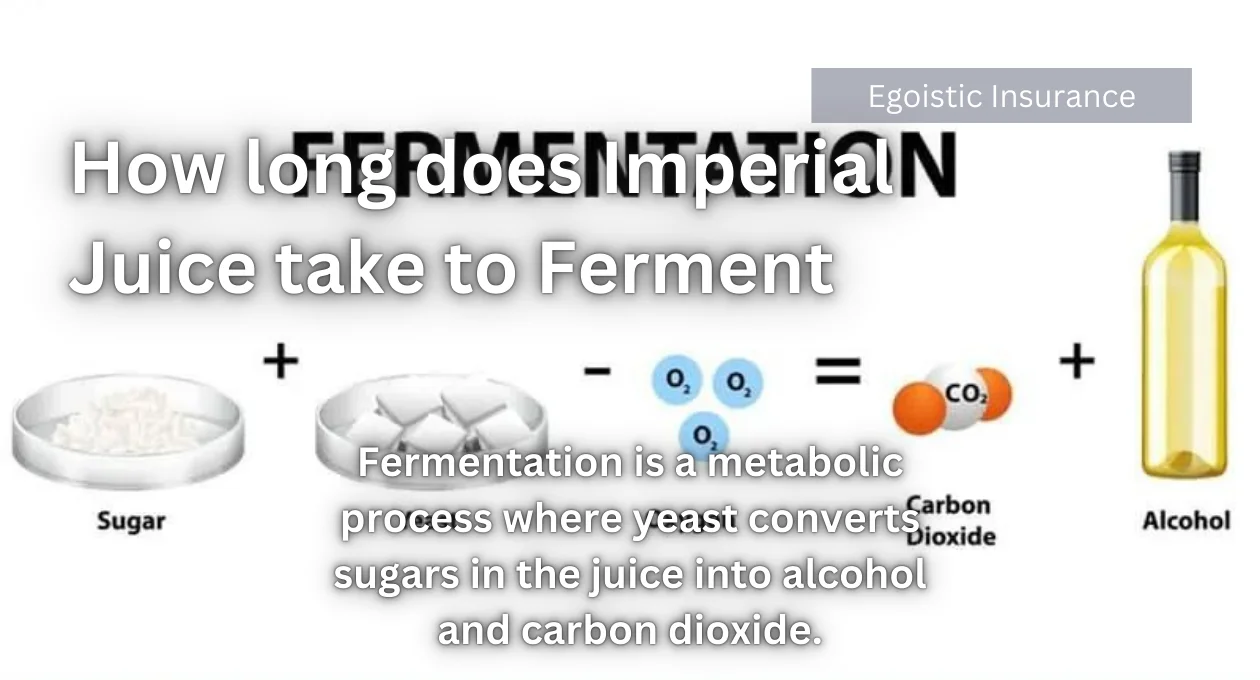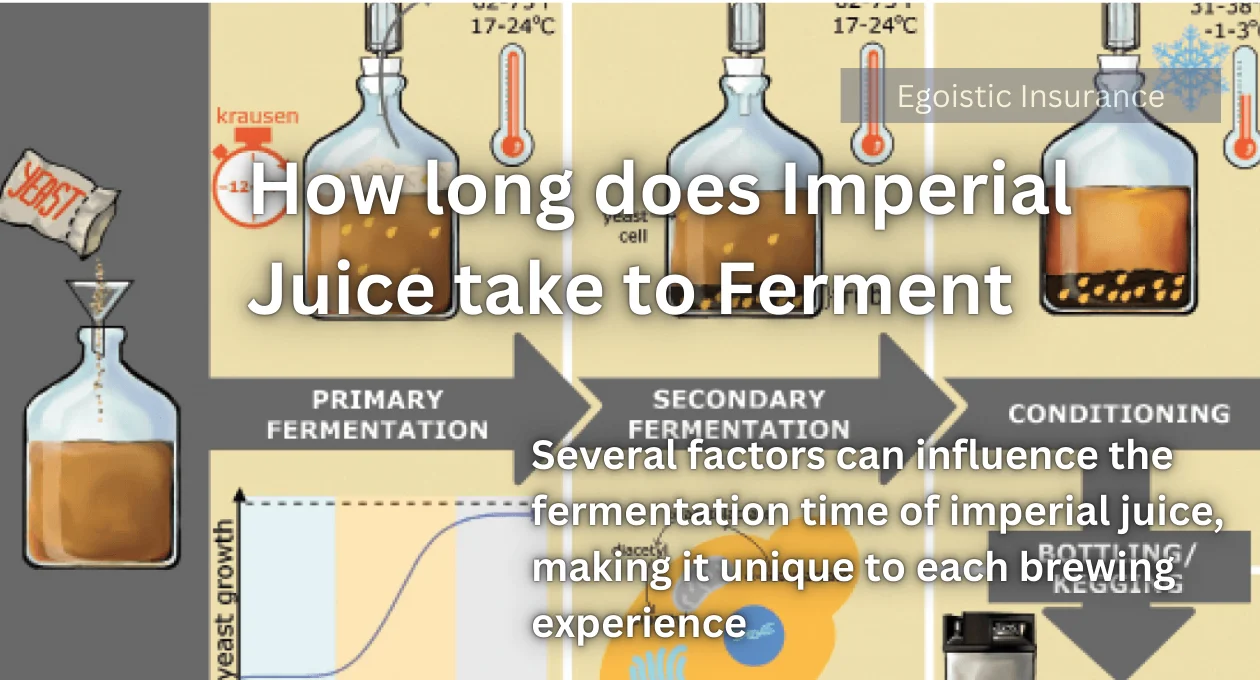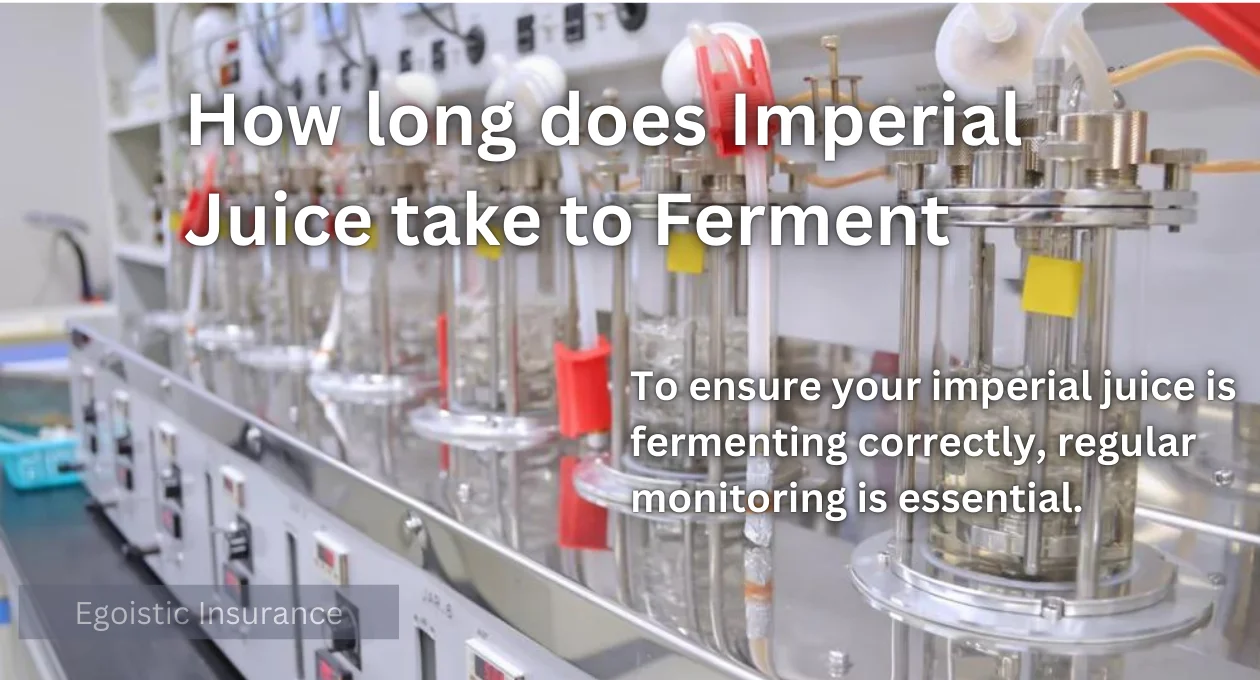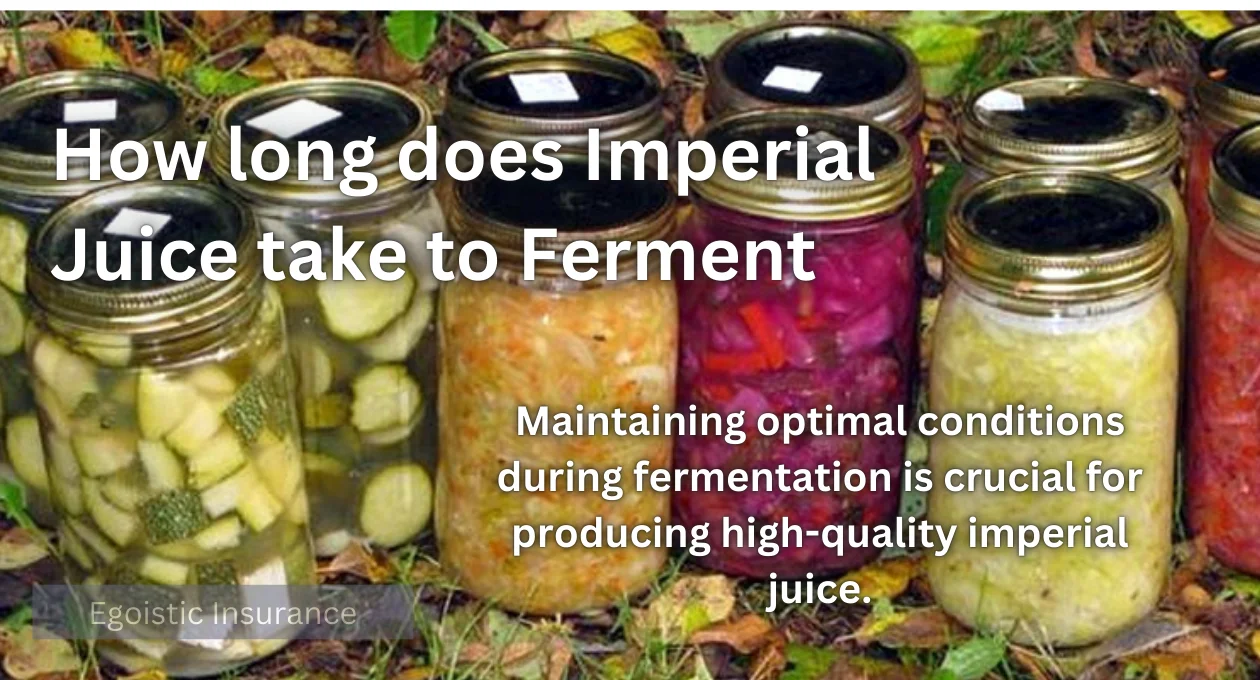Fermentation is an ancient process used to produce a variety of foods and beverages, including the ever-popular imperial juice. If you’re a homebrewer, you might wonder, “How long does imperial juice take to ferment?” In this blog, we’ll delve into the fermentation process, factors that influence it, and provide you with a comprehensive understanding of the timeline involved.
The fermentation timeline for imperial juice can vary significantly based on several factors, including the type of ingredients used, the temperature of the environment, and the specific yeast strain selected. Typically, primary fermentation may take anywhere from one to three weeks. During this phase, the sugars present in the juice are converted into alcohol and carbon dioxide, which is essential for developing the desired flavour profile.
After the initial fermentation, many homebrewers opt for a secondary fermentation period. This stage allows for further clarification and maturing of the juice, usually lasting an additional week or two. The longer fermentation time can enhance the complexity of flavours and create a smoother finished product, making it well worth the wait for those who appreciate the nuances of imperial juice.
What is Imperial Juice?
Before we dive into the fermentation time, it’s essential to understand what imperial juice is. The term “imperial juice” typically refers to a high-gravity juice or beverage, often with a high sugar content, which is fermented to produce a potent, flavorful drink. This can include imperial ciders, wines, or even some high-alcohol fruit beers. The “imperial” designation usually implies a higher alcohol content and richer flavor compared to standard varieties.
When fermenting imperial juice, it’s crucial to monitor the fermentation process closely. Using a hydrometer can help homebrewers check the specific gravity of the juice, indicating how much sugar has been converted into alcohol. This tool not only assists in tracking progress but also ensures that fermentation is proceeding as expected. Regular tastings during fermentation can also provide insights into developing flavours, helping you decide when to transition to secondary fermentation.
In addition to monitoring, the choice of yeast strain can greatly impact the final outcome of your imperial juice. Different yeast strains can impart various flavours and aromas, affecting the overall profile of the beverage. Some strains are more tolerant of higher alcohol levels, while others may leave residual sugars for a sweeter finish. Experimenting with various yeast options can lead to exciting discoveries, giving you the opportunity to customize your brew to match your personal preferences.
The Fermentation Process

Fermentation is a metabolic process where yeast converts sugars in the juice into alcohol and carbon dioxide. During fermentation, various factors can influence the yeast’s activity and the overall flavour development of the imperial juice. Temperature is a critical consideration; warmer temperatures can accelerate fermentation but may also lead to off-flavours if too high. Ideally, maintaining a stable, moderate temperature allows the yeast to work efficiently while preserving the delicate flavours. Additionally, oxygen levels play a significant role, as most fermentation should occur in an anaerobic environment to prevent unwanted oxidation.
Once the fermentation is complete, patience is key. Many brewers suggest allowing the imperial juice to age for several weeks or even months after bottling. This maturation period enables the flavours to meld together, resulting in a more balanced and refined beverage. It also gives any remaining sediment time to settle, leading to a clearer final product. By taking the time to properly age your imperial juice, you ultimately enhance its enjoyment and quality.
The key stages of fermentation include:
- Primary Fermentation: This is the initial phase where most of the sugar is converted into alcohol. It is characterized by vigorous bubbling as the yeast actively consumes the sugars.
- Secondary Fermentation: In this phase, the fermentation slows down. It involves the maturation of the beverage, where flavors develop and impurities settle.
Factors Influencing Fermentation Time

Several factors can influence the fermentation time of imperial juice, making it unique to each brewing experience. Environmental temperature is perhaps the most crucial variable; higher temperatures can speed up the process, while cooler conditions may prolong it. Additionally, the yeast strain selected will impact both the speed and the flavor profile, as different strains have varying fermentation characteristics. Lastly, the sugar content of the juice plays a significant role, as higher sugar levels typically lead to longer fermentation times as the yeast works to convert the additional sugars into alcohol.
Several factors can influence how long it takes for imperial juice to ferment:
- Yeast Strain: Different yeast strains have varying fermentation rates. Some yeast strains are more aggressive and ferment quickly, while others are slower.
- Temperature: Fermentation temperature is crucial. Warmer temperatures speed up fermentation, but they can also produce unwanted flavors. Cooler temperatures result in slower, more controlled fermentation.
- Sugar Content: High-gravity juices with more sugars will take longer to ferment as the yeast has more work to do.
- Nutrient Availability: Yeast needs nutrients to thrive. Adding yeast nutrients can help ensure a healthy fermentation process.
- Oxygen Levels: Oxygen is essential at the beginning of fermentation to help yeast multiply, but too much oxygen later can spoil the batch.
Typical Fermentation Timeline
The time it takes for imperial juice to ferment can vary widely based on the factors mentioned above.
Monitoring the fermentation timeline is crucial for achieving the desired outcome of your imperial juice. As you track the progress, you may notice signs such as bubbling diminishing and sediment formation at the bottom, indicating that fermentation is nearing completion. This is the ideal time to conduct taste tests, which can reveal subtle changes in flavour intensity and character. By paying attention to these details, you can make informed decisions about when to transition to secondary fermentation, ultimately enhancing the quality of your brew. However, here’s a general timeline:
- Primary Fermentation: This stage usually lasts between 7 to 14 days. During this time, you’ll notice active bubbling in the fermentation vessel.
- Secondary Fermentation: After the initial fermentation, it’s common to transfer the juice to a secondary fermenter to age and mature. This phase can last anywhere from 2 weeks to several months, depending on the desired flavor profile and alcohol content.
Monitoring Fermentation

To ensure your imperial juice is fermenting correctly, regular monitoring is essential.
Regular sampling during fermentation allows you to gauge the progression and characteristics of your imperial juice. Tasting at various stages helps identify the development of flavours, whether they are evolving according to your expectations or if adjustments are needed. This hands-on approach also enables you to learn from each batch, enhancing your skills and understanding of the brewing process over time. Keeping detailed notes on these tastings is beneficial for future brews, as it provides a reference for what worked well and what could be improved.
In addition to tasting, maintaining a clean and controlled environment is paramount to the success of your brewing process. Contamination can lead to off-flavours or spoilage, negatively impacting your finished product. Ensure that all equipment is sanitised thoroughly before use and avoid introducing oxygen after the primary fermentation stage. By paying close attention to cleanliness and monitoring your brew, you can ensure a more enjoyable and high-quality imperial juice that meets your desired standards. Here are some tips:
- Hydrometer Readings: Use a hydrometer to measure the specific gravity of the juice. This helps track the fermentation progress and determine when it’s complete.
- Airlock Activity: The airlock on your fermenter will bubble as carbon dioxide is released. Active bubbling indicates ongoing fermentation.
- Taste Testing: Sampling the juice periodically allows you to check the flavor development and make adjustments if necessary.
Tips for Successful Fermentation

Maintaining optimal conditions during fermentation is crucial for producing high-quality imperial juice. Consistency in temperature helps create an environment where yeast can thrive and develop the desired flavours. Additionally, ensuring that the fermentation space is free from light and contamination can prevent unwanted bacteria or wild yeast from affecting the brew. Carefully monitoring these elements throughout the process will greatly enhance the final product.
One of the most rewarding aspects of brewing imperial juice is the opportunity to experiment with different fruit varieties and flavour combinations. By incorporating unique ingredients like spices, herbs, or even different types of sugar, you can create a beverage that reflects your personal taste and creativity. These variations can lead to delightful surprises and allow you to develop signature recipes that distinguish your brews from others.
The final step in the brewing process is bottling, which should be approached with care to maintain the quality of your imperial juice. Ensure that all bottles are properly sanitized to prevent contamination during this transfer. Additionally, consider adding a small amount of priming sugar before sealing the bottles; this will encourage carbonation and enhance the drinking experience. Properly stored, your finished imperial juice can be enjoyed for months, offering a satisfying reminder of the craft involved in its creation.
Another important aspect of successful fermentation is patience. Rushing the fermentation process can lead to undesirable flavours and a lower quality beverage. By allowing sufficient time for each stage, you enable the yeast to work effectively while developing complex flavours. Embracing this patience not only improves your imperial juice but also enriches your brewing experience with each batch you create.
- Sanitation: Ensure all equipment is thoroughly sanitized to prevent contamination.
- Proper Yeast Pitching: Use the right amount of yeast and rehydrate it if necessary before pitching.
- Temperature Control: Maintain a consistent fermentation temperature suitable for your yeast strain.
- Patience: Don’t rush the process. Allow ample time for both primary and secondary fermentation.
FAQs
Q: How can I tell when fermentation is complete?
A: Fermentation is typically complete when bubbling in the airlock significantly slows down or stops, and sediment has settled at the bottom of the fermenter. Additionally, taking hydrometer readings over a few days should show no change in specific gravity.
Q: Can I use different types of yeast for my imperial juice?
A: Yes, various yeast strains can impart different flavors and characteristics to your imperial juice. Experimenting with different types can yield unique results, so feel free to explore options that suit your taste preferences.
Q: What should I do if I notice off-flavors during fermentation?
A: Off-flavors can result from contaminated equipment or improper fermentation conditions. If you encounter these issues, review your sanitation practices, ensure proper temperature control, and avoid introducing oxygen during fermentation. If problems persist, consider adjusting your ingredients or techniques in future batches.
Q: Is it necessary to perform secondary fermentation?
A: While not mandatory, secondary fermentation can enhance the flavour and clarity of your imperial juice. It allows for additional aging and maturation, helping to develop more complex characteristics. If you choose to skip this step, be mindful to bottle the juice promptly to prevent off-flavours.
Q: How does sugar content affect fermentation time?
A: Higher sugar content can lead to longer fermentation times as yeast must convert more sugars into alcohol. Be prepared for this and monitor the fermentation process closely if you use high-gravity juices.
Conclusion
Fermenting imperial juice is a rewarding process that requires patience and attention to detail. The time it takes can vary based on several factors, but generally, you can expect the entire process to take anywhere from a few weeks to several months. By understanding the fermentation process and monitoring it closely, you can produce a delicious, high-quality imperial juice that you’ll be proud to share. Whether you’re a seasoned homebrewer or a beginner, the journey of creating your own imperial juice is sure to be a flavorful adventure.
When sharing your imperial juice with others, consider hosting a tasting event to showcase your creation. This not only allows you to receive valuable feedback but also helps cultivate a sense of community among fellow brewing enthusiasts. Pair your juice with complementary foods to enhance the tasting experience and encourage discussions about the flavour profiles and brewing techniques used. Celebrating the fruits of your labour can foster connections and inspire new ideas for future batches.
For more interesting information keep visiting egoisticinsurance.online


